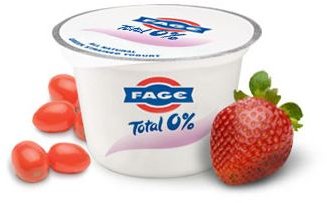The Benefits of Greek Yogurt: A Look at the Nutrition Facts of Greek Yogurt
What is Greek Yogurt?
Greek yogurt goes through a special straining process that makes it much thicker and creamier than your regular yogurt. The yogurt can be made from either sheep milk or cow’s milk; however, most of the varieties available in the USA use cow’s milk.
Greek yogurt is not just popular because it has a wonderful taste and lacks that bitterness so typical of regular yogurt; but more people are eating this variety because it provides many more benefits than the regular variety. So, let’s look at some nutrition facts on Greek yogurt and its health benefits.
High on Protein
Greek yogurt is quite high on protein. A six-ounce container of the highest protein yogurt contains less than 10 grams of this nutrient. On the other hand, the popular Greek yogurt brands contain 14 to 16 grams of protein in six ounces.
This basically means that when you consume this yogurt, you will feel fuller for a longer time. So, you won’t have to reach for your next meal way too quickly, something that weight-watchers will really appreciate.
Low on Sugar
The sugar content in most Greek yogurt brands is lower than regular yogurt. A six-ounce container of the regular nonfat plain yogurt variety contains around 12 grams of sugar. However, most of the popular Greek yogurt brands contain somewhere around 7-9 grams of sugar for the plain variety.
Low in Carbohydrates and Sodium
For people watching their salt and carbohydrate intake, Greek yogurt is a good option. Most popular plain Greek yogurt brands contain 70 to 120 mg sodium, which is quite low. Its carbohydrate content also ranges somewhere between 7 to 12 grams that is much lower than the 15-17 grams present in regular yogurt.
Low in Calories
If you are looking for a replacement for sour cream, Greek yogurt is perfect for you. A cup of fat-free sour cream contains around 170 calories, which is definitely higher than the 135 calories present in Greek yogurt.
Low in Calcium
The only thing that goes against Greek yogurt is that it is lower in calcium compared to regular yogurt. This is because while making this yogurt, milk is heated and cultured and allowed to sit in muslin or cheesecloth bags to let the whey filter out of it. This straining process results in some amount of calcium being lost. So, while regular yogurt provides around 35% of the daily value of this mineral, Greek yogurt provides only 20%.
However, that does not mean that all brands have low calcium content. For example, Yoplait plain Greek yogurt has 45% of the daily value of this nutrient. So, check out the nutrition label if you are looking for high calcium content.
Health Benefits of Greek Yogurt
Since Greek yogurt is low in calories, it is quite an ideal option for weight watchers. If you are trying to lose weight and just can’t stay away from yogurt, try the Greek variety. Just stay away from the full-fat variety and stick to the reduced fat and fat-free kinds. It’s high protein content and low sugar and carbohydrate content also makes it a good choice for people trying to lose weight.

Since it is low on sugar and carbohydrates, it is a good option for people with diabetes and heart disease. It’s also low on cholesterol, for example, both the Chobani and Yoplait plain Greek yogurt varieties have only 3% of the daily value of cholesterol whereas Fage Total 0% has 0 mg of cholesterol. So, although Greek yogurt is anyway a heart-friendly variety, you can choose a brand that is better in terms of lower cholesterol, lower sugar and carbohydrates. Just make sure to check the nutrition label before buying.
How to Make Greek Yogurt at Home?
So, now that you know the benefits of Greek yogurt, its time to try it out for yourself. It is true that Greek yogurt is slightly more expensive than regular yogurt. So, if price is what is worrying you, try making something similar at home. Pour regular yogurt into a strainer lined with cheesecloth; cover and refrigerate it for several hours. The more the yogurt is allowed to drain, the thicker and creamier it will become. And there’s your Greek yogurt, all set to be enjoyed!
References
Ohio State University Extension: Greek Yogurt-What’s That? - https://fayette.osu.edu/topics/family-and-consumer-sciences/news/greek-yogurt-what2019s-that
Chobani: Plain Greek Yogurt Nutrition Facts - https://www.chobani.com/cache/Products/2/source/nutition_2percent_2.jpg
Yoplait: Plain Greek Yogurt - https://www.yoplait.com/products/yoplait-greek-yogurt
Fage: Fage Total 0% Greek Yogurt - https://www.fageusa.com/products/fage-total-0-percent/
Image Credit:
Fage: Fage Total 0% Greek Yogurt - https://www.fageusa.com/products/fage-total-0-percent/
Yoplait: Plain Greek Yogurt - https://www.yoplait.com/products/yoplait-greek-yogurt
